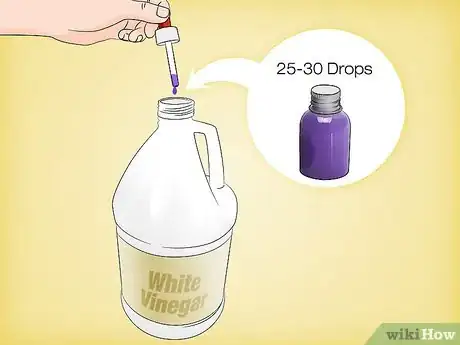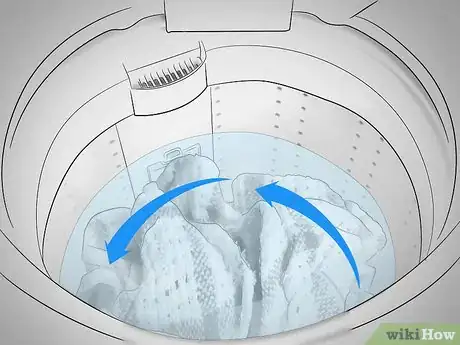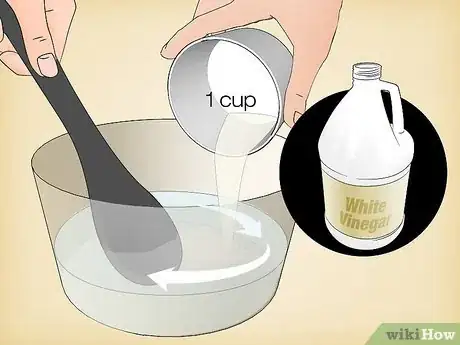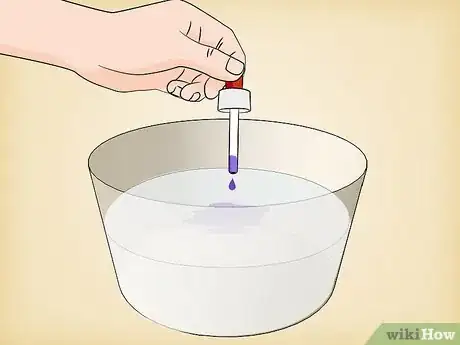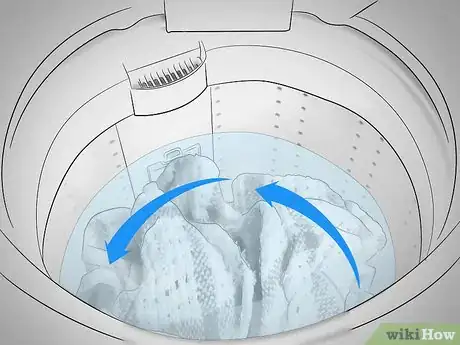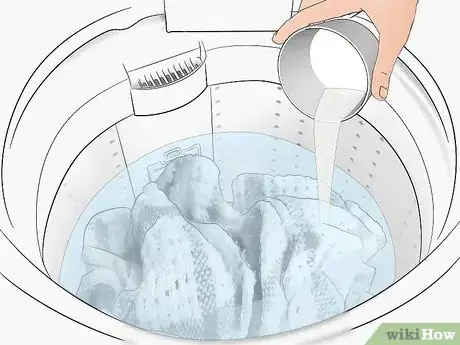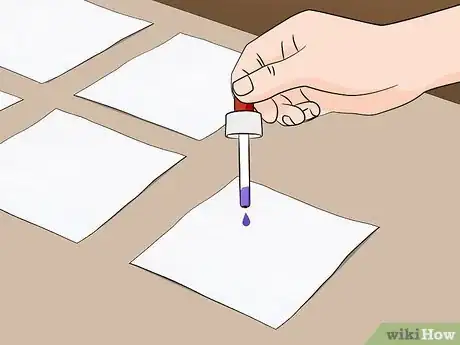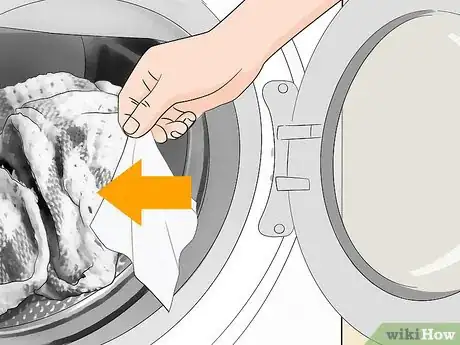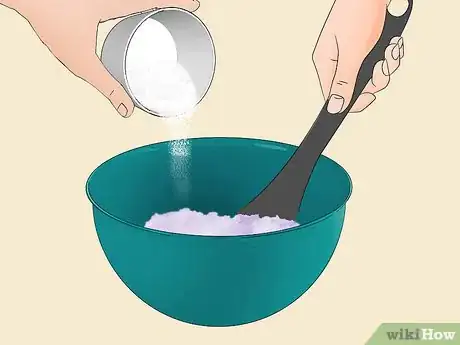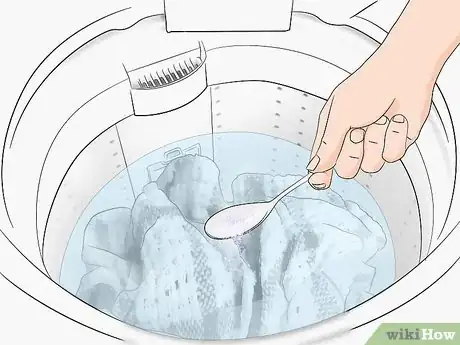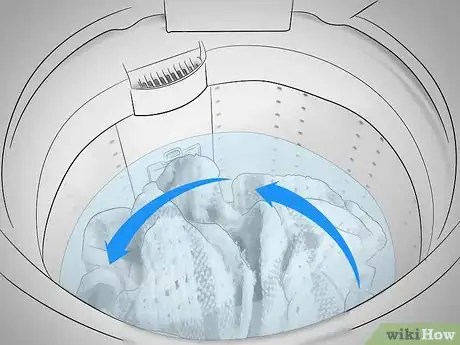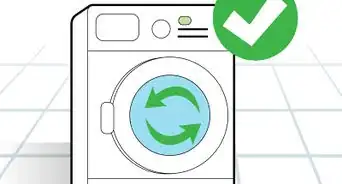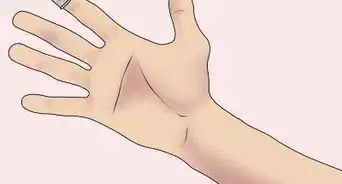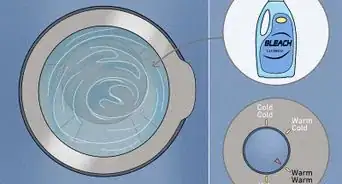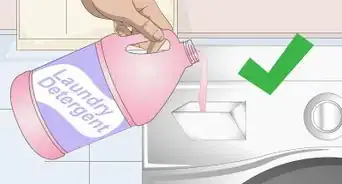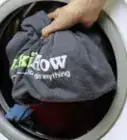This article was co-authored by Kamel Almani. Kamel Almani is a Laundry and Cleaning Specialist and the Co-Owner of WashyWash, a toxin-free and eco-friendly laundry and dry clean service based in Amman, Jordan. Kamel and his staff at WashyWash use Blue Angel certified and dermatologically-tested detergents. They also combine EcoClean and digital technology to provide an eco-friendly, convenient, and quality cleaning service. Kamel holds a BA in Design from the University of Applied Science, Amman.
wikiHow marks an article as reader-approved once it receives enough positive feedback. This article has 21 testimonials from our readers, earning it our reader-approved status.
This article has been viewed 349,488 times.
If you want a more ecological or more economical alternative to commercial fabric softeners, you can make your own at home. Here are a few simple methods you can use.
Steps
Vinegar
-
1Combine 1 gallon (3.8 L) vinegar with 25 to 30 drops essential oil. Stir the essential oil directly into the container of white distilled vinegar for a minute or so to ensure that the two liquids combine well.
- Note that the essential oil is not necessary. The vinegar is the component responsible for softening clothes. It strips away residue on your clothes that would otherwise make them stiff, and it has properties that can break down some of the minerals found in hard water supplies.
- If you do decide to use essential oils, you can use any scents you want.
-
2Add 1/4 cup (60 ml) to your rinse cycle. For a normal load, fill a fabric softener ball with 1/4 cup (60 ml) of the fabric softener solution or add the same amount directly to the washer just before the rinse cycle begins.
- Do not add the fabric softener to the machine before its primary wash cycle.
- Pour the rest of the fabric softener into a storage container. Make sure that this fabric softener is labeled so that you do not accidentally use it for another purpose. Shake or stir well to before each use to make sure that the essential oil and vinegar have not separated as it sat.
Advertisement -
3Continue through a standard rinse cycle. You do not need to do anything special from this point on. Let your rinse cycle finish up as it normally would.
Vinegar and Baking Soda
-
1Combine baking soda and hot water. Stir 1 cup (250 ml) baking soda into 2 cups (500 ml) hot water until well combined. Combine the two ingredients in a large bucket or other container.
- Note that the baking soda will not dissolve, but it should be completely soaked.
- This homemade fabric softener is often praised by people who have hard water.
- Baking soda regulates the pH level in your rinse water, preventing it from becoming too acidic or too alkaline. It also cancels out mineral deposits, like those found in hard water. These mineral deposits are often responsible for making clothes stiff.
-
2Slowly add the vinegar. Slowly add 1 cup (250 ml) white distilled vinegar to the mixture. Stir gently until the baking soda is dissolved.
- The vinegar will react with the baking soda, causing a fizzy chemical reaction. Do not pour the vinegar too quickly or you will end up with a mess.
- Vinegar strips soap and residue from clothing and also helps to soften hard water.
- Some believe that the vinegar and baking soda cancel each other out, making them ineffective. The salt that is produced from the chemical reaction acts as a buffer in the rinse cycle, however. Moreover, many of the elements that help soften clothes remain in the solution even after the reaction occurs.
-
3Scent the fabric softener, if desired. If you want to make scented fabric softener, then you need to add essential oil or scent booster to the ingredients. Stir either option directly into the fabric softener solution.
- If using essential oils, 25 to 30 drops should be sufficient.
- If using scent booster, add 1/4 to 1/2 cup (60 to 125 ml) of the crystals to your water and stir until dissolved.[1]
- Scent booster is usually found in the laundry aisle. It is not a natural product, so it may not be preferable from an ecological sense, but it will lend your fabric softener a pleasant scent and may save you money in the long run.
-
4Pour 1/4 cup (60 ml) into your washing machine during the rinse cycle. For a normal load, fill a fabric softener ball with 1/4 cup (60 ml) of the fabric softener solution or add the same amount directly to the washer just before the rinse cycle begins.
- Do not add the fabric softener to the machine before its primary wash cycle.
- Pour the rest of the fabric softener into a storage container. Shake or stir well to combine before each use.
-
5Run the rinse cycle as usual. You do not need to do anything special from this point on. Let your rinse cycle finish up as it normally would.
Conditioner
-
1Combine vinegar, hair conditioner, and hot water. In a large bucket or other container, stir together 3 cups (750 ml) white distilled vinegar, 2 cups (500 ml) hair conditioner, and 6 cups (1500 ml) hot water until evenly combined.[2]
- You can use any hair conditioner you want for this method. To make it more cost effective, choose a cheap brand.
- Since there are many varieties and scents of conditioner available on the market, your scent options are nearly endless.
- Note that this is not an "all natural" solution, but it is quite effective. The vinegar strips aways stiffening residue and the conditioner softens fibers.
-
2Add 1/4 to 1/2 cup (60 to 125 ml) to your washing machine just before the rinse cycle. For a normal load, fill a fabric softener ball with 1/4 cup to 1/2 cup (60 ml to 125 ml) of the fabric softener solution or add the same amount directly to the washer just before the rinse cycle begins.
- Do not add the fabric softener to the machine before its primary wash cycle.
- Pour the rest of the fabric softener into a storage container. Shake or stir well to combine before each use.
-
3Run the rinse cycle as usual. You do not need to do anything special from this point on. Let your rinse cycle finish up as it normally would.
Fabric Softener Sheets
-
1Cut cotton cloth into small squares. Cut clean cotton cloth into squares that are roughly 5 inches (12.7 cm) along each side.[3]
- Cotton works well because it is a natural fiber and relatively breathable. Avoid fabrics with fibers that are spaced too tightly together. Also avoid synthetic fabrics.
- You can use a rag or old piece of cloth for this, but make sure that the material you use is clean.
-
2Spray each square with white vinegar. Fill a small spray bottle with undiluted distilled white vinegar. Spray both sides of each square until moist to the touch.
- Let dry slightly. The cloth can be moist, but it should not be dripping wet by the time you add it to the dryer.
- The vinegar is the only element in this fabric softener formula that lends itself to actually softening your clothes. It may not be as strong as a liquid fabric softener using vinegar, but some of the effects should still remain.
-
3Add a few drops of essential oil onto one square. Drop 3 to 5 drops of your favorite essential oil onto a cloth square. Spread the drops out so that they seep into the fibers of the entire square.
- The essential oil will give your clothes a pleasant yet mild fragrance. You can technically use this method without the use of essential oils, but since the softening effects are less powerful than a liquid fabric softener alternative, it would make more sense to take advantage of the deodorizing and re-scenting abilities of this method.
-
4Throw the scented fabric into your dryer. Place the scented fabric softener sheet directly into your dryer as you prepare to dry a load of clothes. Run a standard drying cycle. You do not need to do anything special from this point on.
- Each dryer sheet can be used for two or three loads, but you may need to refresh the scent by adding 3 drops or more of the essential oil before use. Refresh the softening properties by giving the sheet another quick spray of vinegar.
Fabric Softener Crystals
-
1Mix coarse salt and essential oil. Add 20 to 30 drops of your favorite essential oil to 2 cups (500 ml) of Epsom salt or coarse sea salt in a medium bowl or container.[4]
- Stir well until all of the essential oil has been spread over and absorbed by the salt.
- You can use any scent of essential oil you want to use. If desired, you can even combine scents to create your own unique fragrance.
-
2Stir in baking soda. Mix 1/2 cup (125 ml) of baking soda into the scented salts until evenly distributed.
- Alternatively, you could leave the baking soda out altogether and add it to your machine separately during the wash.
-
3Add 2 to 3 Tbsp (30 to 45 ml) to the rinse cycle. Before your washing machine enters a rinse cycle, add the scented crystals directly to the water in your machine.
- Only use 2 to 3 Tbsp (30 to 45 ml) of the fabric softener crystals.
- If you did not add baking soda to the crystals, you can add up to 1/2 cup (125 ml) of baking soda in conjunction with this fabric softener per normal load of laundry.
- Do not add the fabric softener crystals to the start of the washing cycle, before the washing part actually takes place. Only add it to the washing machine during the rinse cycle.
-
4Run the rinse cycle as usual. You do not need to do anything special from this point on. Let your rinse cycle finish up as it normally would.
Expert Q&A
-
QuestionHow else can I soften clothes naturally?
 Kamel AlmaniKamel Almani is a Laundry and Cleaning Specialist and the Co-Owner of WashyWash, a toxin-free and eco-friendly laundry and dry clean service based in Amman, Jordan. Kamel and his staff at WashyWash use Blue Angel certified and dermatologically-tested detergents. They also combine EcoClean and digital technology to provide an eco-friendly, convenient, and quality cleaning service. Kamel holds a BA in Design from the University of Applied Science, Amman.
Kamel AlmaniKamel Almani is a Laundry and Cleaning Specialist and the Co-Owner of WashyWash, a toxin-free and eco-friendly laundry and dry clean service based in Amman, Jordan. Kamel and his staff at WashyWash use Blue Angel certified and dermatologically-tested detergents. They also combine EcoClean and digital technology to provide an eco-friendly, convenient, and quality cleaning service. Kamel holds a BA in Design from the University of Applied Science, Amman.
Laundry & Cleaning Specialist You could also dry the clothes in a tumble dryer using a low heat setting. Tumbling softens fabrics.
You could also dry the clothes in a tumble dryer using a low heat setting. Tumbling softens fabrics. -
QuestionCan I use a fragrance oil instead of an essential oil?
 Community AnswerAs it is only serving to provide fragrance to the fabric softener, it is fine to make this substitute, just be aware that some people are allergic to certain components in fragrance oils.
Community AnswerAs it is only serving to provide fragrance to the fabric softener, it is fine to make this substitute, just be aware that some people are allergic to certain components in fragrance oils. -
QuestionWhere can I get essential oils?
 Community AnswerYou can buy them online. Companies that sell essential oils don't have to disclose the actual concentration of the oils, so avoid cheaper brands that may have as little as 10%. True essential oils should not contain any other ingredients.
Community AnswerYou can buy them online. Companies that sell essential oils don't have to disclose the actual concentration of the oils, so avoid cheaper brands that may have as little as 10%. True essential oils should not contain any other ingredients.
Warnings
- Never mix vinegar and chlorine bleach. Doing so produces a dangerous gas.⧼thumbs_response⧽
- Do not use apple cider vinegar or another tinted vinegar for any of these recipes. Tinted vinegars will stain or darken your clothes.⧼thumbs_response⧽
Things You'll Need
- Vinegar
- Hot water
- Essential oils
- Baking soda
- Scent booster
- Hair conditioner
- Scissors
- Cotton fabric
- Coarse salt
- Resealable container
References
About This Article
To make your own fabric softener, try using vinegar for an eco-friendly alternative to commercial softeners. Mix together 1 gallon of vinegar with 25 - 30 drops of any essential oil to give the fabric softener a pleasant scent. When you want to use it, simply pour ¼ cup of the fabric softener directly into your load of washing during the rinse cycle. Then, continue the washing cycle and enjoy your naturally softened clothes. Alternatively, use hair conditioner, vinegar, and hot water to make your own fabric softener. Combine 3 cups of vinegar with 2 cups of hair conditioner and 6 cups of hot water. Then add ¼ - ½ cup of the fabric softener to the machine just before the rinse cycle begins. After you add the fabric softener, let the cycle run as usual. For more ways to make fabric softener, like using vinegar and baking soda, read on.
